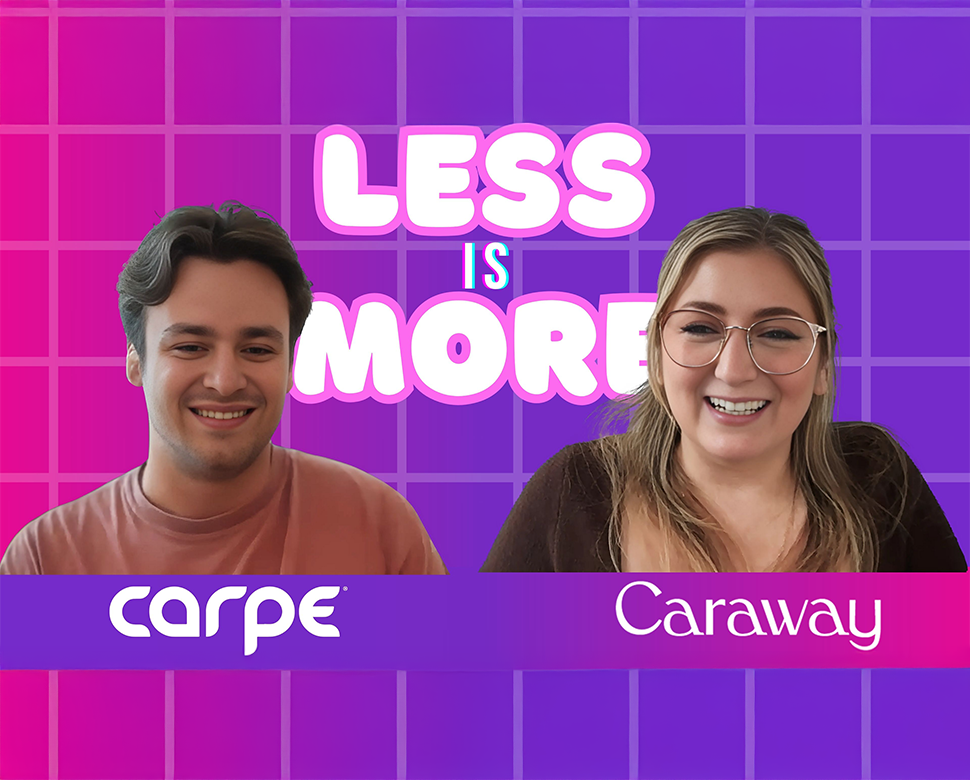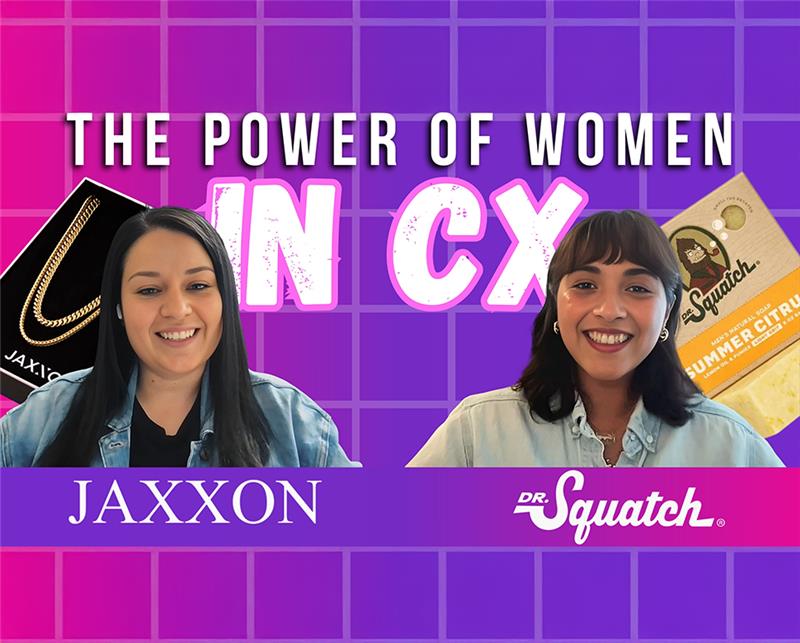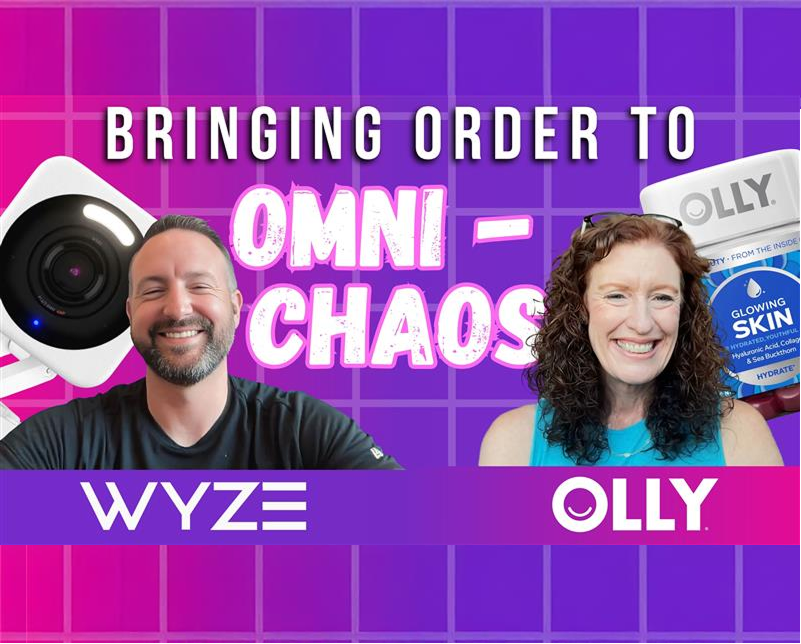7 surprising strategies that help small CX teams outperform big budgets


Ever wondered how some brands deliver exceptional customer experiences without massive teams or budgets? In our latest CX Mixer Podcast episode, we challenged conventional wisdom about what it takes to provide top-notch customer service.
Our guests, Nancy from Caraway Home and Daniel from Carpe, shared insights that might make you reconsider your approach to CX. Let’s explore their strategies for doing more with less and why bigger isn’t always better when it comes to customer experience.
The power of lean, agile Teams
Both Caraway and Carpe operate with compact CX teams, proving that size isn’t everything. Nancy manages a team of 7 internal employees and 35 outsourced agents, while Daniel oversees 20 in-house staff and 27 offshore agents.
These small teams handle significant customer volumes, demonstrating that efficiency and strategy trump sheer numbers. It’s not about how many people you have, but how effectively you use their talents.
Enhancing human touch with technology
Contrary to popular belief, technology in CX isn’t about replacing human interaction. It’s about enhancing it. Daniel shared an approach that saves time without sacrificing quality:
“We’ve built integrations with Recharge so that agents can change the frequency of their subscription, delay their next order to a certain date, and change the price, all within Gorgias.”
This integration saves 30 seconds to a minute per ticket, allowing agents to focus on more complex customer needs. It’s a prime example of how technology can make human interactions more meaningful, not less.
The myth of lightning-fast responses
Here’s a surprising revelation: the fastest response isn’t always the best. Nancy pointed out:
“We were responding so fast and it was under an hour, and people would accuse our real humans of being AI.”
This challenges the common belief that customers always want immediate responses. Sometimes, a thoughtful, slightly delayed response can be more effective and feel more personal. It’s about quality over speed.
When to part ways with customers
One of the most controversial topics we discussed was the idea of “breaking up” with customers. Daniel mentioned:
“When someone’s sucking up a lot of time and they have no value as a customer, then it’s like, you should probably go buy something from Walmart.”
This approach might seem counterintuitive, but it allows brands to focus their resources on customers who truly value their products and services. It’s not about rejecting customers, but about ensuring a good fit between the brand and its audience.
CX: More than just a support function
If you think CX is just about answering emails, think again. Nancy debunked this myth:
“CX is company wide. So every department, whether it’s product, marketing, finance, they all play a role in the actual customer journey and how we shape it.”
This holistic view of CX emphasizes its strategic importance across the entire organization. It’s not just a support function. It’s a key driver of business growth and customer loyalty.
The value of deeper customer conversations
Daniel challenged the idea that fewer customer interactions are always better:
“We want to have a conversation with our customers and we can spend more money to do that and increase our LTV.”
This approach turns customer service from a cost center into a revenue generator. By engaging more deeply with customers, brands can uncover opportunities for upselling, cross-selling, and building long-term loyalty.
Continuous learning and improvement
Both guests emphasized the need for ongoing education and improvement in CX. Daniel advised:
“Go in and read 100 tickets, 200 tickets a week and just understand what the customers are saying and how you’re responding to them.”
This hands-on approach ensures that CX strategies remain relevant and effective, adapting to changing customer needs and expectations.
Beyond traditional metrics
Nancy cautioned against relying too heavily on standard CX metrics:
“Do not use out of the box reporting. Obviously CSAT and NPS tells you a lot, but it’s only a piece of the puzzle.”
This advice encourages a more nuanced, context-aware approach to measuring CX success, looking beyond surface-level numbers to understand the full customer story.
A fresh perspective on CX
As we wrapped up our conversation, it became clear that effective CX isn’t about following a universal playbook. It’s about understanding your unique brand, customers, and challenges, then crafting tailored solutions that align with your business goals.
The insights from Nancy and Daniel challenge us to rethink our assumptions about what makes for great customer experience. It’s not always about the biggest team or the fastest response. Sometimes, it’s about the right team, the right technology, and the willingness to engage in meaningful conversations with your customers.
Your CX revolution starts now
Ready to revolutionize your approach to customer experience? Start by questioning your current assumptions. Are you focusing too much on speed at the expense of quality? Are you trying to please every customer, even those who might not be the right fit for your brand?
Remember, great CX isn’t about following trends. It’s about creating authentic, valuable interactions that resonate with your specific audience. Whether you’re managing a small team or a large department, there’s always room to innovate and improve.
Listen to the full episode on YouTube, Apple Podcasts, or Spotify for more insights and strategies from Nancy and Daniel. And don’t forget to subscribe to the CX Mixer Podcast for more conversations about customer experience that challenge the status quo.
What CX myth will you challenge in your organization today?




